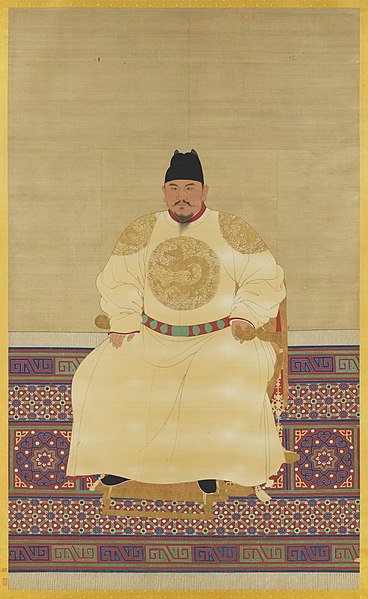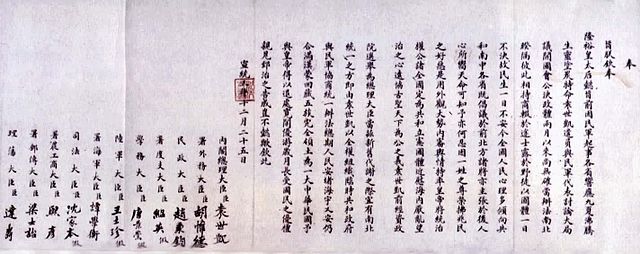Chinese nationalism is a form of nationalism in which asserts that the Chinese people are a nation and promotes the cultural and national unity of all Chinese people. According to Sun Yat-sen's philosophy in the Three Principles of the People, Chinese nationalism is evaluated as multi-ethnic nationalism, which should be distinguished from Han nationalism or local ethnic nationalism.
At the beginning of the 20th century, the sentiment of nationalism in China rose sharply, represented by the May Fourth Movement in 1919
Qing dynasty illustration of Yue Fei who led Chinese Southern Song army against Jurchens
Portrait of the Hongwu Emperor, who led Chinese movement against Mongol Yuan dynasty
This abdication decree announced the fall of the Qing Dynasty and the succession of the Republic of China, marking the success of the 1911 Revolution
Three Principles of the People
The Three Principles of the People is a political philosophy developed by Sun Yat-sen as part of a philosophy to improve China made during the Republican Era. The three principles are often translated into and summarized as nationalism, democracy, and the livelihood of the people. This philosophy has been claimed as the cornerstone of the nation's policy as carried by the Kuomintang; the principles also appear in the first line of the national anthem of the Republic of China.
Sun Yat-sen, who developed the Three Principles of the People
"Portrait of Sun Yat-sen" (1921) Li Tiefu Oil on Canvas 93×71.7cm
A sign on Dadan Island near Quemoy (Kinmen) facing Mainland China proclaiming "A Unified China Under Tridemism" set by General Zhao in Aug. 1986, dismissed after 1987 Lieyu Massacre







